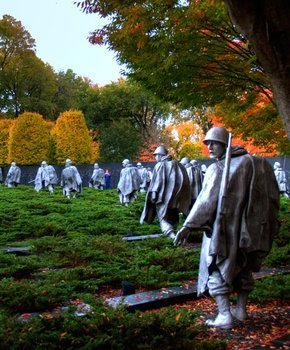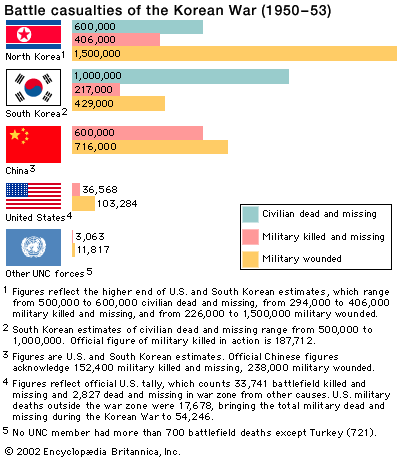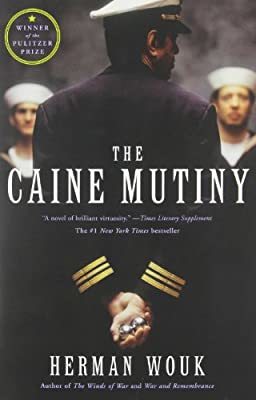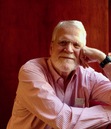Mark Scott Smith's Blog: Enemy in the Mirror, page 53
October 15, 2020
United Nations Forces in the Korean War
Sixteen UN nations supplied fighting units and five sent military hospitals and field ambulances. Australia was one of the very first to contribute military personnel from all three services. The single largest UN contributor was the United States of America (USA) which at one stage had 140,000 personnel deployed in direct combat roles in Korea. Great Britain, Canada, France, Belgium, the Netherlands, Colombia, Ethiopia, South Africa, New Zealand, Turkey, Greece, Thailand, Philippines and Luxembourg sent fighting units. Norway, Sweden, Denmark, India, Italy contributed military hospitals and field ambulances to the cause.
Source: United Nations Forces in the Korean War | Anzac Portal

The post United Nations Forces in the Korean War appeared first on Enemy in the Mirror.
October 12, 2020
Cost of Living 1951
House: $7,300
Average income: $3,515
Ford car: $1424-$2253
8.3 cu. ft. General Electric refrigerator: $330
Milk: $.92
Gas: $.20
Bread $.16
Postage stamp: $.03
1 lb. of buttered peanut brittle: $.25
14 oz. can of Hershey’s Syrup: $.17
Sliced Bacon: $.63 per lb
Coca Cola, 6 bottles: $.37
Canada Dry Ginger Ale, (2) 28 oz bottles: $.39
Post Sugar Crisp, 6 oz pkg: $.15
Jerry Mahoney Ventriloquist dummy: $14.95
Source: FiftiesWeb
The post Cost of Living 1951 appeared first on Enemy in the Mirror.
October 8, 2020
Korean War Armistice Talks Begin
In July 1951, peace talks began between the U.N. and North Korea in the village of Kaesong (later moved to nearby Panmunjon), just north of the future Demilitarized Zone (DMZ).

The desire to secure more territory and unresolved disagreement regarding the repatriation of prisoners-of-war (some of whom were reluctant to be returned to their home countries) dragged the talks out for another two years.
Digital Archive of peace talks
 Korean War Memorial Washington D.C.
Korean War Memorial Washington D.C.
Unfortunately, the prolonged negotiations (which resulted in little change in the relative positions of opposing forces) resulted in many more civilian and military deaths on both sides.


The post Korean War Armistice Talks Begin appeared first on Enemy in the Mirror.
October 5, 2020
Ernie Kovacs Popular TV Comedian
Ernest Edward Kovacs (1919 – 1962, was a popular American TV comedian, actor, and writer. Often spontaneous, his zany comedy style influenced numerous TV comedy programs for years after his death. Frequently his slapstick humor included unusual behaviors such as hosting a pet marmoset or wrestling a jaguar.
While Kovacs and his wife Edie Adams received Emmy nominations for their comedy series in the 1950s, it was not until after his death in an automobile accident in 1962 that he received an Emmy for Outstanding Electronic Camera Work and the Directors’ Guild award.
Later, he was inducted into the Academy of Television Arts & Sciences Hall of Fame and received a star on the Hollywood Walk of Fame for his work in television.
Source: Wikipedia
The post Ernie Kovacs Popular TV Comedian appeared first on Enemy in the Mirror.
October 1, 2020
Family Bomb Shelters for Atomic Attack
As Cold War tension regarding the threat of Soviet nuclear attack rose in the 1950s, children learned to duck and cover under their school desks and many families across the country built fallout shelters in their basements and backyards.
Community shelters were constructed beneath municipal buildings, and emergency government bunkers were carved into hillsides.
Source: History.com
The post Family Bomb Shelters for Atomic Attack appeared first on Enemy in the Mirror.
September 28, 2020
Did The U.S. Deploy Bioweapons During the Korean War?
A 1950s report published in Peking by an international commission concluded that the U.S. used bioweapons on North Korea. The report raised doubts about claims that captured Americans were brainwashed into confessing the use of such weapons.
Chinese film of 1953, purporting to show soldiers (?) in white body suits in Korea. Chinese scientists testing reactions to chemical spraying. Biological warfare.
However, documents acquired in the 1990s from the former Soviet Union concluded that the accusations of United States use of biological weapons during the Korean conflict were fraudulent.
 Former USSR – World Atlas
Former USSR – World AtlasBiological warfare in a historical perspective – A review by R.Roffey, A.Tegnell, F.Elgh
During World War I Germany infected horses being shipped to the Allies with anthrax or glanders.
During World War II the USA, Russia, the UK, Canada, France, Italy, Germany, Japan, and Hungary tried to acquire biological weapons capability but use was limited. In contrast, the Japanese biological weapons program became advanced with the production of plague, anthrax, typhoid, cholera and dysentery agents tested on prisoners of war and used against Chinese populations.
In 1943, work on biological warfare agents began at Fort Detrick, Maryland. The US program during WWII developed small-particle-size aerosol dissemination of wet or dry preparations of pathogens and a production facility for bacterial agents was opened in the Pine Bluff Arsenal in Arkansas. At its peak in the 1950-60s, the program involved a number of agents including: Bacillus anthracis, Francisella tularensis, Brucella suis, Coxiella burnetti, Venezuelan equine encephalitis (VEE) virus, yellow fever, botulin, staphylococcal enterotoxin, and the anti-crop agents Pyricularia oryzae and Puccinia graminis.
In 1969 the U.S. joined the Biological and Toxin Weapons Convention, agreeing to stop further offensive biological weapons development and to use the facilities for peaceful purposes or for bio-defense work only. In 1992 Russia banned ongoing biological weapons development. But concerns still exist regarding possible residual programs and U.S.intelligence reports suggest several states (e.g., Iran, North Korea, Syria) still have active programs.
The post Did The U.S. Deploy Bioweapons During the Korean War? appeared first on Enemy in the Mirror.
September 24, 2020
The Caine Mutiny Wins The Pulitzer Prize

The Caine Mutiny, a novel by Herman Wouk, won the 1951 Pulitzer Prize.
Derived from Wouk’s personal experiences aboard destroyer-minesweepers in the Pacific during WWII, the novel deals with the moral and ethical decisions made at sea by a ship captain.
The non- violent mutiny takes place during Typhoon Cobra, in December 1944.
The court-martial of the mentally-unstable Captain provides the dramatic climax to the plot.
In 1954, the novel was made into a motion picture starring
The post The Caine Mutiny Wins The Pulitzer Prize appeared first on Enemy in the Mirror.
September 21, 2020
First H-Bomb Test on Eniwetok Atoll
In January 1950, President Harry Truman, despite strong reservations of the Atomic Energy Commission, made the controversial decision to intensify research and production of thermonuclear weapons.
On May 12th, 1951, the United States, detonated the first hydrogen bomb on Eniwetok Atoll in the Marshall Islands.
The bomb was based on the combination of a nuclei of heavy hydrogen (deuterium) and the process of fission.
Operation Greenhouse was designed to reduce the size, weight and amount of fissile material necessary for nuclear weapons, while increasing the destructive power.
The post First H-Bomb Test on Eniwetok Atoll appeared first on Enemy in the Mirror.
September 17, 2020
Rosenbergs sentenced to death for espionage
Julius and Ethel Rosenberg were charged with conspiracy to commit espionage and brought to trial on March 6, 1951;
On March 29 they were found guilty, and on April 5,1951 the couple was sentenced to death.
Julius and Ethel Rosenberg were executed by electric chair at Sing Sing Prison on June 19, 1953. Both proclaimed their innocence up to the time of their deaths.
The post Rosenbergs sentenced to death for espionage appeared first on Enemy in the Mirror.
September 14, 2020
UNIVAC – First Commercial Computer Built
The UNIVAC I was the first American computer designed to provide fast execution of relatively simple arithmetic and data transport operations for commercial purposes, as opposed to the complex numerical calculations required of scientific computers.
By adding offline card processing equipment, the UNIVAC was designed to compete with existing punch-card machines.
To promote sales, the Remington Rand Corporation joined with CBS to have UNIVAC I predict the result of the 1952 Presidential election. UNIVAC I accurately predicted an Eisenhower victory over Adlai Stevenson, the candidate pollsters favored.
UNIVAC I used about 5,000 vacuum tubes, weighed 16,686 pounds, 7 consumed 125 kW, and could perform about 1,905 operations per second running on a 2.25 MHz clock.
Source: Wikipedia
The post UNIVAC – First Commercial Computer Built appeared first on Enemy in the Mirror.
Enemy in the Mirror
I began by posting events around the turn This website www.enemyinmirror.com explores the consciousness, diplomacy, emotion, prejudice and psychology of 20th Century America and her enemies in wartime.
I began by posting events around the turn of the 20th century as I was researching my first novel about the Pacific War. I continued through WWII for my second novel about the Battle of the Atlantic. Now I am beginning to look at the Cold War as I gather information for my next novel about the Korean War. ...more
- Mark Scott Smith's profile
- 7 followers



